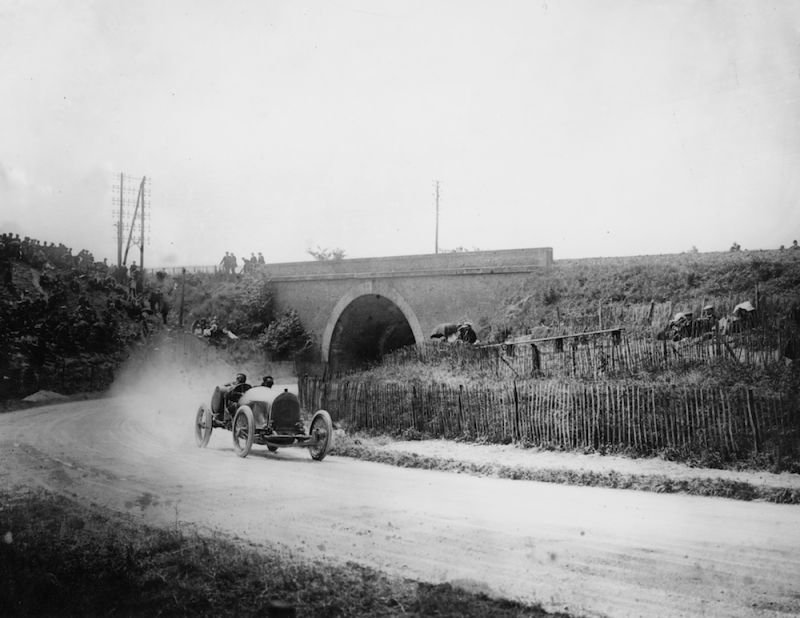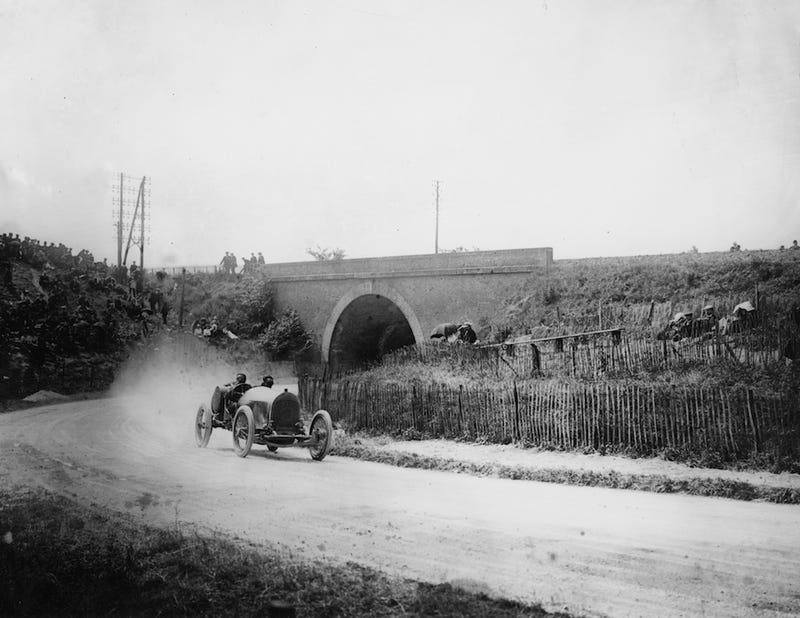I have never owned a car, and since my driver’s license expired at the beginning of this year, I have yet to have enough cause to motivate me to renew it. So, going by my personal experience, all I can really recommend when it comes to driving through Europe is that you should find a nice man who is both an above-average driver and a resident of a city like New York where he drives so infrequently as to actually miss it; that you should marry him and have him rent a car on your European honeymoon that has a comfortable passenger seat; and that if he hasn’t taken a foreign language class since high school and you were the sort of defiant college kid who thought that ancient Egyptian would be a more useful language than, say, Spanish, you should make sure to seek out a car that comes equipped with an English GPS. (Spring for some sort of data plan on your smartphone; it’ll be worth it.)
This is all fairly specific. More so given that I’m endorsing the cost and hassle of renting a car for the purpose of taking an extended road trip across Europe not just from the generally privileged position of someone who can take such a trip, but from that of a non-driver who’s taken such a trip with access to the radio. Still, hear me out. If you’re going to do this, do it in a car.
Public transportation is wonderful, environmentally-friendly, and something many European cities do especially well (not to mention my sole means of transportation in everyday life). You can and should learn to navigate the metro if whatever country you happen to be visiting has one that’ll take you where you want to go. It’s not that difficult even if you don’t speak the language, and will give you a greater appreciation for smart infrastructure. You should definitely spend a few days seeing the sights in whatever capital city you flew into by foot or bus or tram or train. But after you’re done with that, you should pick up a rental car and go more than 15 miles from the airport.
Advertisement
Recently, my new husband and I happened to be in Portugal during 10 days of almost historically bad weather. It was cold and rainy and, having failed to check the weather report in the less than 24 hours between swapping vows and hopping on a plane, we had packed multiple bathing suits each. This, of course, impacted how useful the car turned out to be. But you should take this as supporting evidence for, and not an exception to, larger car-related rules. Weather happens; be prepared.
Don’t leave whatever city you’re starting from right away. Drive to the most inconveniently-located museum or market you would have otherwise missed and take a moment to get lost in the residential neighborhoods along the way. Pretend you live there—is this block better than that one you saw before? Pull up Google Maps and give each other a harried tour of buildings you might never see again. It’s not as good as immersing yourself in the culture for years, but at least now you know what the University of Lisbon campus looks like. Let yourself be charmed by shit that would surely get annoying if it impacted the actual routine of your real life. People just park in the middle of intersections here! is not something you’d laugh about back wherever in America you’re from.
Sponsored
Head out to the suburbs and, beyond that, the countryside. Marvel about how similar it feels to Middle America—or how different, considering all the orange trees. If back home is somewhere that considers French bulldogs to be wildlife, call out cattle and horses whenever you see them by the side of the road. Consider pulling over for fruit stands or unmarked vistas.
We knew that we’d be reliant on the car once we got to the resort that was to serve as a base from which we’d head off to tour the many world-renowned beaches in the area. But in the cold rain, the car became not just a means to an end but an all-day activity. (The weather in Portugal is, in a word, capricious.) And so we cruised around sleepy beach enclaves inaccessible by train, stopping to eat gelato or run out to the surf every time the rain stopped.
Small towns don’t, though, have to be soaked in rain—or situated on the coast—to be worth spending a day in and/or around. They won’t give you a comprehensive sense of a country, but they have a value all their own. Picking your way between out of the way places is a good time to make use of all that phone data you sprang for as you Google town names and make snap judgements about which roadside attractions are worth the drive.
You can only kill so much time this way, though. And so, if it’s still raining, spend nights back at the hotel crosschecking maps and weather reports in search of plausible destinations to salvage the second half of the week, perhaps figuring, as we did, that a honeymoon comes once in a lifetime. Cheap flights and close quarters make Europe feel small, but with a car, that reality comes to life in the form of countless possibilities.
Advertisement
Is it worth it to drive seven hours just to eat dinner in Madrid? What about four and a half to look across the Straits of Gibraltar and lay eyes on another continent? Does Google Maps account for roundabouts every 300 meters? We hadn’t planned to go to Spain at all, but with a car and a couple of open days nothing was stopping us, and so we settled on Seville. Two and a half hours with the wedding playlist blasting and a chance to see the border was easily worth the incredible surprise of spending a day in a city about which we had no preconceived notions.
And in the end, the car made our trip back to the airport—in the rain, with all our luggage and souvenirs—a little less stressful.
This, of course, anecdotal. So is the honeymoon story my dad told me, but it’s a good one nonetheless.
We did what was called the “farm auto tour”. We picked up a car in London and drove out into the countryside. We had a huge, two-sided paper map of England, a list of the locations and phone numbers of dozens of farms, and other homes in the small towns and cities in the program, and vouchers for 10 nights. Each day we decided where we wanted to go, mapped it out, and called the property in the area to tell them that was where we wanted to stay. We stayed in mostly farm houses, and had breakfast and sometimes dinner with the families. Sometimes we stayed for two nights, like in the Lake District. We learned about life in the neighborhood, and local ruined castles and other off the beaten path “non-tourist” attractions. We also learned about which pubs had the best food and talk. It was a spectacular success, except that I had to drive a Vauxhall for 10 days on narrow roads on the wrong side of the street.
It was so great that we repeated it two years later, going to all different locations. (Except for Bath. We went back to Bath.)
I’d like to think that navigating British backroads with a stick-shift and a steering wheel on the right side of the car helped prepare my parents for 30 years of raising four kids.
Your particular reasons for travel may vary, as might your patience for traversing one-way roads with two-way traffic. I’ve had great trips abroad where I never left the same city I flew into; and I lived for several months in England getting around just fine without a car. But when it comes to experiencing as much as possible in a short time, your best bet, if you can swing it, is to get into some part of Europe with a car and see what happens.














